National Park guide Aimie Asrol was running late and had to explain his tardiness to his boss.
“I’m sorry, boss, I’ll be a little late to work. She is angry. Look - she’s blocking the road, I can’t pass.”
The “she” he was referring to was a female elephant who was taking a stroll down the middle of the road with a calf.
Aimie and his companion had been driving behind them for some time but found no opportunity to overtake the duo.
Soon, Aimie decided to get out to record this “roadblock” and send it to his boss as evidence. His sentence was cut off when the elephant roared and charged towards him. He was only 200m away.
Aimie ran for his life and distanced himself from the elephant. He watched her leave before hitting the accelerator to flee the scene. What he managed to capture on video was unsettling: as soon as she caught notice of his car, the female elephant stormed back towards his direction.
The guide shared this video on TikTok, raising discussions among the villagers. No one had witnessed enraged elephants chasing humans before.
His account started gaining followers and Aimie’s friends would often do an impression of him saying, “I’m sorry, boss, I’ll be a little late to work.” This makes Aimie somewhat proud.
Myth of wild elephants and vengeance
It was the villagers who led me to find Aimie who works in a resort located in Kuala Tahan, which is to the north of Pahang.
Like a cheeky boy, this 40-year-old was always wearing a grin on his face. Elephant watching is his favourite pastime, especially during his daily one-hour drive to work from Kuala Sat to Kuala Tahan National Park.
While the roadside scenery has changed significantly throughout the years, increasingly more elephants are making an appearance.
Aimie’s mother and his boss were not amused by his video. They worry that he will find himself in trouble someday.
Their worries are not unfounded. According to the Wildlife and National Parks Department’s (Perhilitan) National Elephant Conservation Action Plan 2023-2030 (Necap 2.0), 22 cases of wild elephant encounters resulted in 13 casualties and nine fatalities between 2015 and 2021.
The same reason was behind all these cases - victims did not keep their distance from the elephants. When the elephants charged towards them, they did not have enough time to get away. Like Aimie, they were busy taking photographs or videos and got attacked when they got too close.
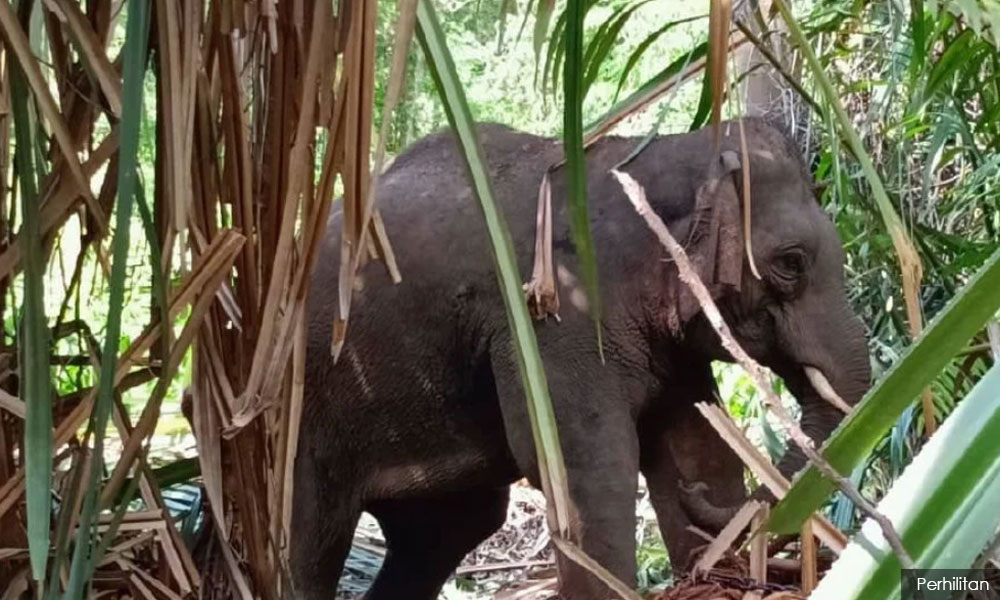
Other villagers did not find Aimie’s actions amusing, either. Elephants are a subject of taboo and fear. As I chatted with them in the coffee shops, they told me wild elephant folk tales and myths and cautioned me not to seek them out, for it was dangerous.
An elder from the neighbouring table chimed in agreement: “It is village wisdom that you do not cakap besar (be boastful).
“Some people may claim they are not afraid of elephants, and will pull its ears if they see one. They will meet an elephant the next instant and be scared out of their wits.”
The villagers’ stories added an enigmatic quality to these wild elephants, even the government officers and scientists are puzzled by these unexplained happenings.
A Perhilitan officer told me that wild elephants are sensitive, hold grudges, understand human behaviour and take vengeance on humans.
An orchard owner once tried to poison the wild elephants, which led to his land being trampled on. The surrounding farms, however, remained undisturbed.
I met with a researcher who reminded me of Sheldon Cooper from “The Big Bang Theory”. I assumed that should he prioritise empirical evidence and careful reasoning, he would refute the myths of the vengeful elephants.
To my surprise, the Malaysian Sheldon Cooper asserted that he was not superstitious but would never doubt the elephant myths.
As forests contain mysterious forces of nature beyond human comprehension, villagers would approach the forest with the utmost respect.
For example, to avoid referring to elephants as gajah (the Malay word for elephant), villagers would refer to them as “orang besar” (big man), “orang kuat” (strong man), or the respectable “datuk” (grandfather).
By doing so, the elephants would not know they were being mentioned. These folk tales appear to shield villagers from harm.
When faced with the unpredictable behaviours of wild animals, such stories pass on reminders of caution when dealing with elephants.
Broken pipes and water disruptions
Wild elephants pose problems to the villages’ water supply. Kampung Pagi and Kuala Sat do not have tap water supply.
Instead, water comes from the mountain rivers a few kilometres away, channelled through black polyethylene pipes using pressure difference from the high grounds into their water reservoir tanks at home.
It’s “musim gajah” (elephant season) in May and June every year, a villager named Amirul Naim told me. That is when the weather is at its hottest and water pipes get destroyed the most.
Amirul figured that the elephants probably loved the feeling of cool water on their skin, so they pulled out the pipes to get to it.
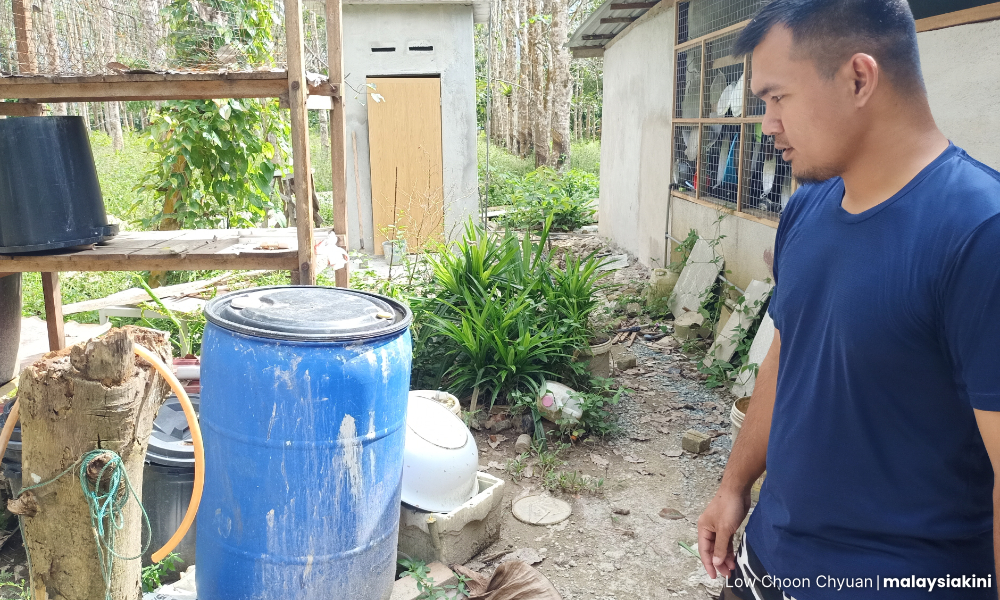
Water supply disruption causes problems for villagers including Amirul’s mother, who needs it for house chores. There is not enough water for kitchen use, so they save up buckets of water daily for times of need.
This was when Amirul’s eyes were opened to the environmental changes and logging problems in his hometown, and that two mega plantations situated nearby were the main contributors to their problems.
Both projects failed. They failed to consider the consequences of setting up large plantations in a region where wild elephants roam.
Its plants will become the elephants’ go-to food source as soon as they lose their habitat. As a result, the two plans fell short of the expected economic outcomes and further exacerbated the conflict between humans and elephants.
READ MORE: Timber grab: The truth behind Pahang oil palm plantations
Wild elephants forage for food in lowland forests. They roam far and wide, covering 324sqkm per day. They eat a lot too, spending 19 hours grazing away on 150kg of food daily.
However, lowland forests are where human activity is the densest, often with plans from the state government or industry players to develop plantations or build roads.
This then heightens the competition for land between humans and elephants.
Change in environment, elephant behaviour
Elephant encounters used to be rare, even with villages on forest fringes. The recent decade witnessed surges in human-elephant encounters - the elephants have undergone behavioural changes to adapt to human activity and their environment.
For example, cars and engine noises, headlights, or even petrol fumes used to terrify wild elephants but the elephants today would sit by the roads, unfazed by passing cars.
Villagers also noticed that the elephants had undergone a diet change: they no longer fancy the Napier grass, banana, rattan, or bamboo that grow in forests.
Instead, they have become picky eaters, exclusively dieting on the banana, coconut, sugarcane and hearts of palms (umbut) planted by humans.
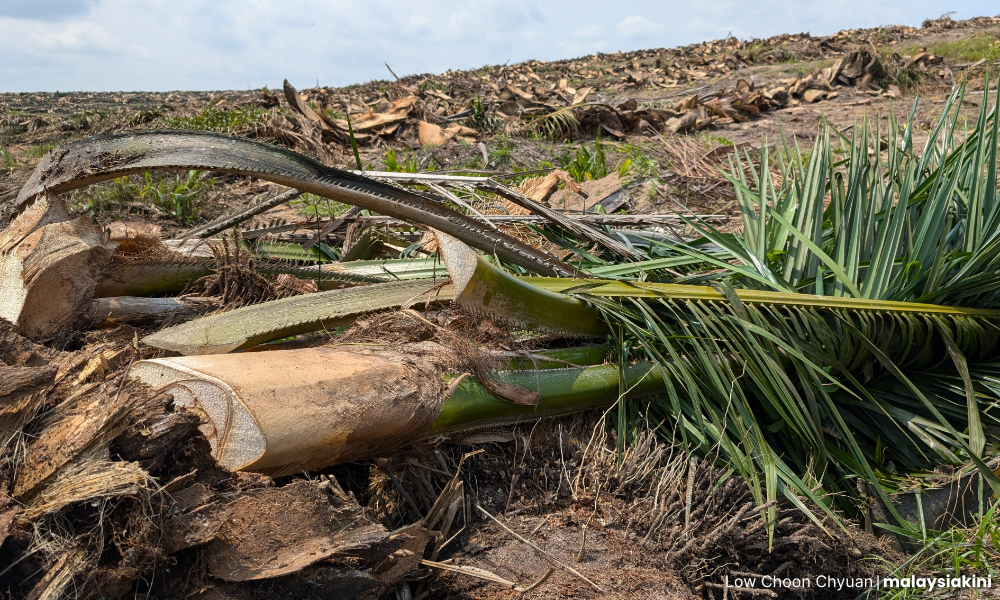
Deforestation destroys natural salt licks. As elephants lose their source of minerals from their natural surroundings, they would visit the village and rummage through homes in search of salt.
Sometimes, they would eat soap as well, for salt is a main ingredient in the product.
Contrary to popular belief, deforestation makes foraging for the elephants easier as dense virgin forests make it difficult for them to find food since sunlight can hardly penetrate the thick forest canopy, leaving the floor bare with little to no plants.
Instead, elephants love to visit secondary forests - forests regenerated after significant man-made or natural destruction - as well as forest edges or riverbanks. Low shrubs and bushes here allow elephants to feed with their trunks easily.
Throughout history in Peninsular Malaysia, the human-elephant relationship wasn’t always fraught with tension and conflict.
According to environment conservationist Lim Teck Wyn, the Orang Asli and Malay villagers used to employ a slash and burn agricultural technique when living in the forests.
The grounds will be cleared and vegetation dried before being set on fire to create fertilised soil. After several years of planting and the soil is no longer rich, they would shift away from these lands and clear up a new forest area.
Lim said there is a tacit arrangement between the Orang Asli and wild elephants.
When the thick canopy opens up and new shoots pop up on the forest floor, elephants would come and feed. As their massive frames move through the grounds, like a bulldozer at work, they create new pathways for humans and other animals to walk through the forest.
The conflicts started when agricultural practices shifted towards extensive cultivation, leading large plantations to be set up in Peninsular Malaysia.
In the 1960s, oil palm plantations only took up 500sqkm of land. The area tripled in just 27 years, encroaching on elephant habitats.
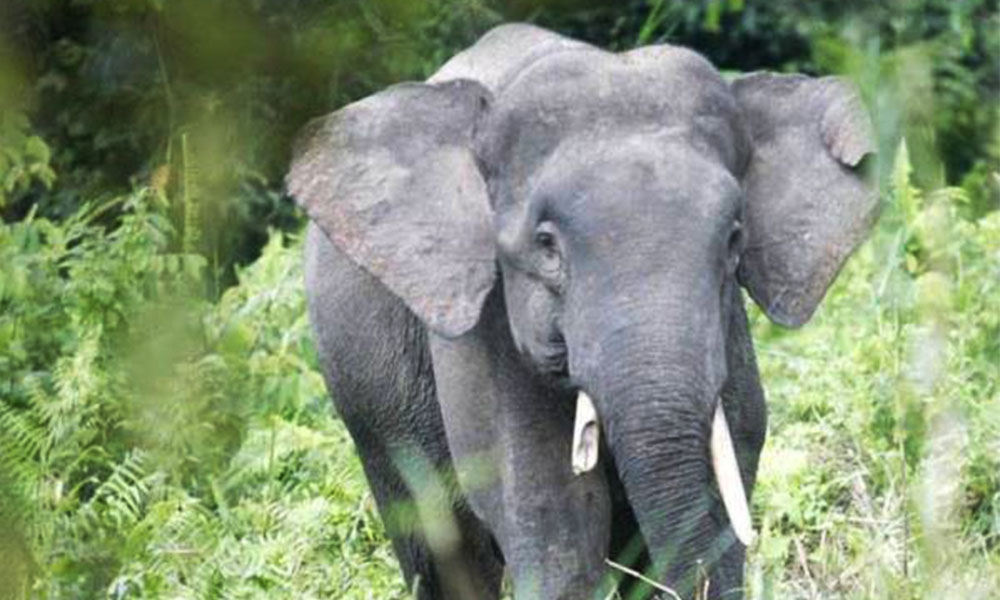
On Oct 19, 2023, Natural Resources and Environmental Sustainability Minister Nik Nazmi bin Nik Ahmad informed Parliament that the main human activity that causes human-elephant conflict is farmland development, posing grave impacts on their habitats.
On top of that, logging, mining, the building of roads and dams are also among activities that worsen the situation.
Eradicating ’pests’
Villagers and wild elephants, caught in the upheaval of their environment changes, find themselves in a tense, antagonistic relationship. As they adapt to survive, hostility arises to drive each other away.
Wild elephants, as described by the villagers, are wise, smart, and sensitive. But they can also be rash, naughty, and clumsy.
There are six villages in Hulu Tembeling, and Abdullah Salleh (below) resides in one of them, Kampung Pagi.
He told me that elephants love sugarcane, coconut, banana and heart of palm. That was what he planted too at his farm. Sometime last year, when Salleh was getting ready for bed, his neighbours alerted him of elephants storming his crop.
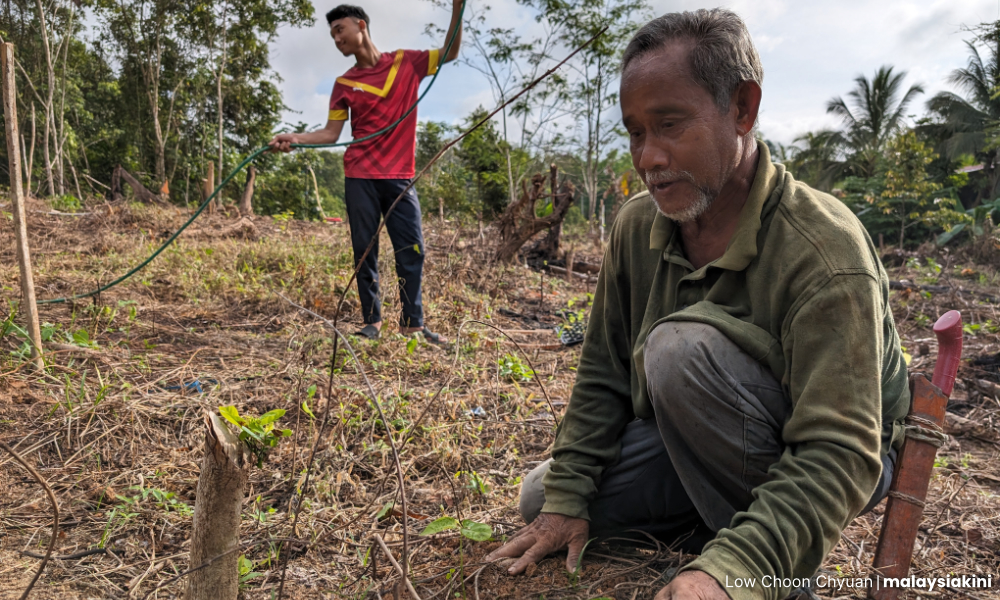
An hour passed after Salleh made a report, and the Kuala Tahan Wildlife Department’s response team arrived. Armed with the knowledge of the elephants’ behavioural patterns, they fired shots into the air, lit firecrackers and burned tyres, in an attempt to drive them out with strong smells and loud noises.
“Elephants do not know that they are huge, they do not know that they are strong. A mindless walk around crushes all my banana trees,” Salleh said in a tone of resignation.
Salleh would describe the wild elephants as clumsy and silly, but he also finds them to be annoying and troublesome creatures.
“What was on your mind when the elephants went into your plantation?” I asked Salleh.
“I was furious. If I had a rifle, I would have fired shots,” he responded.
“Do you think there would be better solutions to the wild elephant problem?” I further queried.
“Elephants reproduce, just like humans, so their numbers are just going to increase.
“There is less and less food for them in the forests, so they would have to feed from our lands, and it is a problem that will get out of hand soon.
“I think we just have to get rid of them. A bullet for each elephant,” Salleh added.
READ PART 2: Elephant in the room: Culling vs coexisting
To the farmers, these massive beasts are mega agricultural “pests” that destroy their farmland. They feel all their hard work was for nothing and Salleh’s hatred for these elephants is understandably justified.
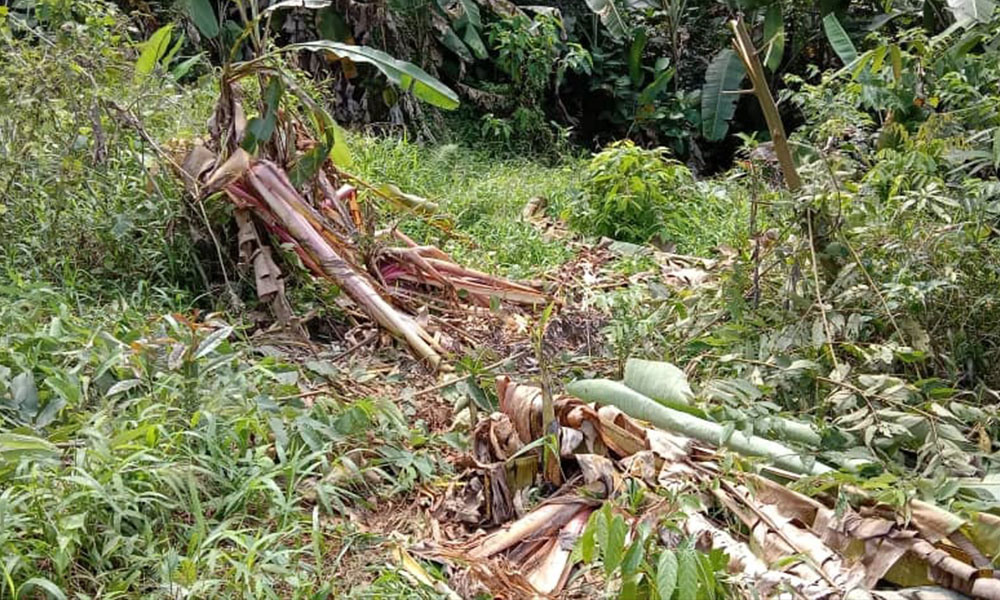
To eradicate the elephants is a common sentiment among farmers. In Johor and Sabah, where human-elephant conflicts are the most intense, stories of farmers taking matters into their own hands often appear on the local news. There have been reports of elephants being shot or poisoned to death.
Necap’s report estimates that human-elephant conflict resulted in RM42.5 million in losses across the peninsula between 2015 and 2021, with Pahang alone incurring RM10.52 million.
Over the same period, 116 elephant deaths were recorded with 43 percent (50 cases) caused by illegal hunting, including poaching and poisoning.
“The elephant in the room” refers to an obvious problem that people ignore. In the reality of human-elephant conflict, are humans or elephants the root problem? Or could there be another giant lurking in the shadows of the corners?
This story was produced in partnership with the Pulitzer Center’s Rainforest Investigations Network. This story was translated by Leong Jie Yu.

